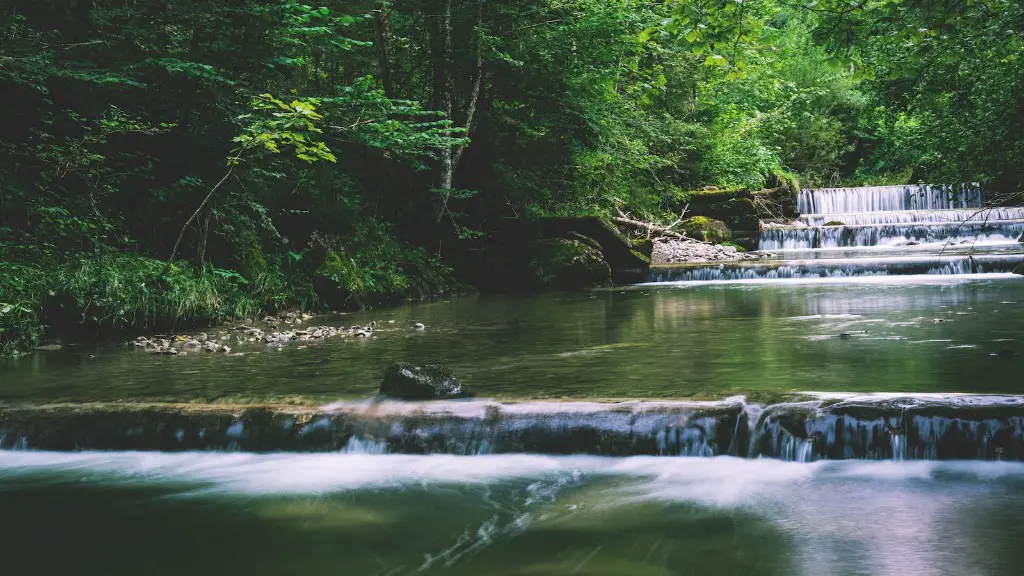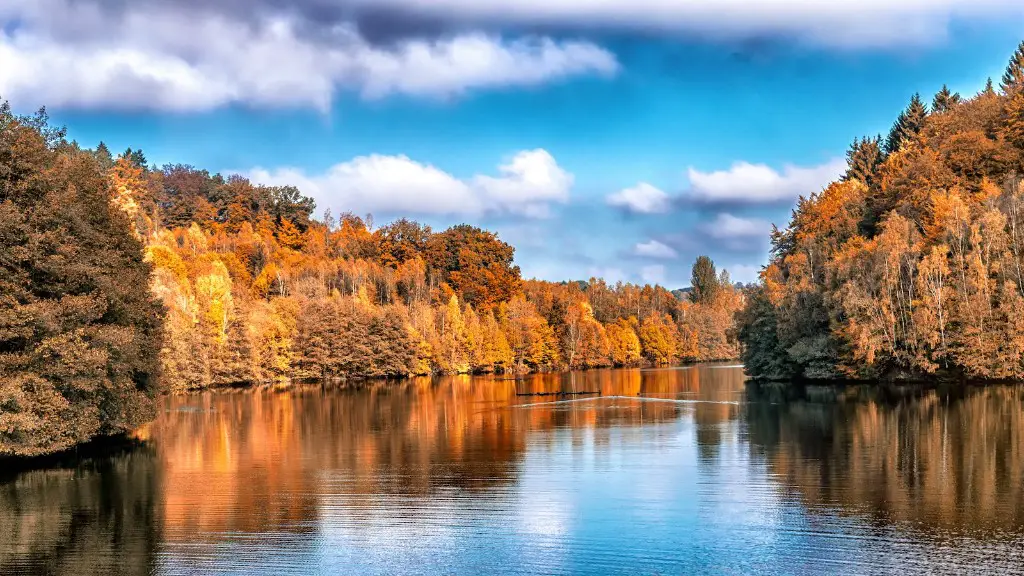The Yangtze River is the longest river in China and the third longest river in the world. It is one of the most important rivers in East Asia, and has shaped the culture and history of the region for thousands of years. In the modern era, it has become an important waterway for trade, transport, and development projects.
The Yangtze River originates from the glaciers of the Qinghai-Tibetan Plateau in the southwestern Chinese province of Qinghai and flows almost 4,000 miles (6,475 km), through the eastern Chinese provinces of Sichuan, Yunnan, Hubei, Hunan, Jiangxi, Anhui, and Jiangsu, before draining into the East China Sea near Shanghai.
The Yangtze River basin is one of the most populous and most economically developed regions in China, with nearly half of China’s population living within its borders, as well as major cities such as Chongqing and Shanghai.
The river plays an important role in Chinese history and culture. It is home to dozens of ethnic minority cultures, as well as unique landscapes, flora and fauna, and important archaeological and historical sites. Ancient Chinese lived on the banks of the Yangtze River many thousands of years ago, and it continues to this day to be an important source of livelihood for many Chinese people.
The Yangtze is also home to some of China’s most important environmental challenges. Industrialization and development projects have had a significant impact on the river’s health, leading to dams, dredging, and pollution that has threatened the river’s delicate ecosystems.
Environmental experts from around the world have raised the alarm about the impacts of development projects on the Yangtze, bringing global awareness to the issues facing the river and its inhabitants. Efforts to conserve the river’s ecological health have been made, such as the Three Gorges Dam project, which was meant to control the river’s flow and improve the environment, but critics have argued that the project hasn’t had the desired effects.
The future of the Yangtze River is uncertain. While development and trade on the river are likely to continue, the effects of climate change, increased populations, and industrialization are all likely to have a major impact on the river in the years to come. Sustainable development is essential for preserving the Yangtze River’s unique biodiversity and culture. But in order for that to happen, environmental experts, businesses, and governments need to work together to protect the river for future generations.
Dam Projects of the Yangtze River
The Three Gorges Dam is the largest dam in the world in terms of installed capacity and the biggest water transfer engineering project in the world. It is located at the junction of the Jangtse and Han Jangtse River in the Hubei Province. The main purpose of the dam is to generate electricity and improve navigation along the river. The Three Gorges Dam is one of the most controversial dams in the world because of its many effects on the environment, the displacement of people and the negative impacts on biodiversity.
In the late 1980s, China launched the Yangtze River Dam Project, which included the construction of 19 hydropower dams on different sections of the river. The project has been controversial from the start, with many environmental and human rights organizations opposing the project due to its potential impacts on the environment and displacement of people. The Chinese government has claimed that the project has brought positive economic benefits and improved flood control. Critics, however, argue that the benefits of the project have been exaggerated and that the impacts on the environment and people living in the region have been significant.
Another major dam project on the Yangtze River is the Xiluodu Dam, located on the Jinsha River, a major tributary of the Yangtze. The dam is the fifth-largest hydropower plant in the world, with a total installed capacity of 13.860 megawatts. It is also controversial, with critics arguing that it will disrupt local ecosystems, increase the risk of landslides and flooding downstream, and displace thousands of people living in the area.
The construction of dams on the Yangtze River has been a major source of controversy and debate in China. While some argue that the dams are necessary for economic development, others point out the potential environmental and social impacts of the dams and believe that other, more sustainable, development options should be pursued.
Pollution Challenges of the Yangtze
The Yangtze River is facing a number of environmental challenges due to increased human activity. The river’s pollution levels have been rising over the past decades and are now reaching dangerous levels in many areas. Pollution from industry, agriculture, and other sources is leading to water shortages, species loss, and increased health risks for people living along the river.
The industrialization of the Yangtze River has had a major impact on its environment. Chemical factories and other industries have been increasingly dumping their toxic waste into the river, leading to severe water pollution. As a result, the river’s ecosystem has been destroyed and fisheries have been decimated. Furthermore, the water in the Yangtze is now contaminated with heavy metals and other hazardous chemicals, which poses a risk to the health of people living along the river.
Agricultural runoff has also had a negative impact on the Yangtze River. Fertilizers and pesticides used by farmers can wash into the river, and this can lead to the growth of algae, which can disrupt the river’s ecosystem and reduce its oxygen levels. Pollution from other sources, such as sewage, can also affect the river.
Overfishing is another major problem for the Yangtze River. Many local fishermen rely on the river for their livelihoods, but overfishing has led to a dramatic decline in fish stocks. This has had a major impact on the river ecosystem and the communities that depend on it.
To address these issues, the Chinese government has implemented various measures, including strict regulations and enforcement of environmental laws. However, progress has been slow and the river’s pollution levels remain a serious concern.
Economic Development Along the Yangtze River
Economic development has been a major focus of the Chinese government in recent years and the Yangtze River has been at the heart of this effort. The Chinese government has been investing heavily in infrastructure projects in the region, such as ports, bridges, and dams, in order to promote trade and industry. Such projects have had a significant impact on the local economies, creating jobs and opportunities for people living along the river.
In addition, the Chinese government has implemented policies to encourage investment in the region, such as tax incentives, subsidies, and other financial incentives. These measures have had a positive impact on the region’s economic development, but they have also had a negative effect on the environment with increased pollution and negative impacts on ecosystems.
The Chinese government is also investing heavily in the development of tourism in the region, which has led to a boost in tourism-related industries such as hotels, restaurants, and transportation. This has increased employment opportunities for local people, but it has also had a negative impact on the local environment with increased pollution and traffic.
Development along the Yangtze River has had both positive and negative impacts on the region. While infrastructure projects and investment have created jobs and provided economic opportunities for local people, they have also had a negative effect on the environment. It is important for the Chinese government to ensure that economic development is balanced with environmental protection in order to protect the Yangtze River for future generations.
Tourism Along the Yangtze
Tourism is one of the fastest growing industries in the world, and the Yangtze River has become a major destination for tourists. The river’s unique biodiversity and cultural heritage have made it an attractive destination for tourists from around the world.
Cruises along the Yangtze River are one of the most popular attractions in the region. Boats depart from Shanghai and travel upstream along the river, stopping at important sites such as the Three Gorges Dam, Yangtze River Bridge, and the Yangtze River gorges. The trip usually takes a few days and offers a spectacular view of the river and its surroundings.
The Three Gorges Dam is one of the most popular tourist destinations along the Yangtze River. The dam is the world’s largest hydroelectric power station and has become a symbol of modern China’s ambition. Tourists can take tours of the dam and its surrounding areas, as well as boat trips down the river.
The Yangtze River gorges are another popular tourist destination. The gorges are some of the most stunning scenery in the world and are a perfect place for sightseeing, hiking, and other outdoor activities.
Tourism has brought some economic benefits to the region, but it has also had a significant impact on the environment. The influx of tourists has strained local resources and caused pollution and other environmental problems. It is important for the local authorities to ensure that economic development is balanced with environmental protection in order to preserve the unique biodiversity and culture of the Yangtze River for future generations.





